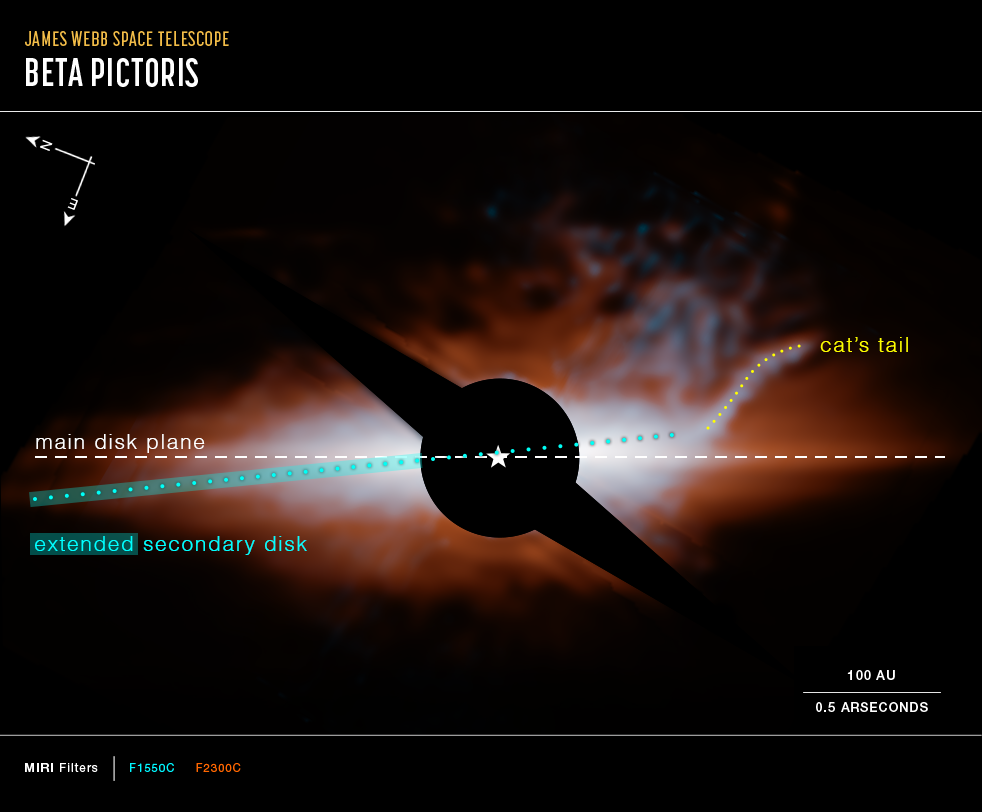Astronomers using the James Webb Space Telescope have captured images of a dusty “cat’s tail” in the young planetary system known as Beta Pictoris. This system is located just 63 light-years away from Earth and has been an intriguing place for scientists to study despite literal decades of observations.
The cat’s tail that Webb spotted is just one of a few new structures that astronomers have found themselves intrigued by. A new composition created by the research team showcases the cat’s tail in glorious detail around the main and secondary debris disks previously discovered here.
Overall, the astronomers say that the results of the observations of Beta Pictoris with Webb’s Near-Infrared Camera (NIRCam) and Mid-Infrared Instrument (MIRI) exceeded their expectations. And there is good reason this system has garnered so much attention.

As Isabel Rebollido, lead author on the new research, explains, “Beta Pictoris is the debris disk that has it all: It has a really bright, close star that we can study very well, and a complex circumstellar environment with a multi-component disk, exocomets, and two imaged exoplanets.”
Further, Rebollido says that the team didn’t expect Webb to reveal two different types of material around the system. However, MIRI clearly shows that the material in the cat’s tail and the secondary debris disk are hotter than in the main disk, which has only enamored scientists more.
This tail and its beginning are essential things to study for future research, too, the astronomers explain in their paper, which was showcased at the 243rd meeting of the American Astronomical Society. The latest meeting took place in New Orleans, Louisiana, and highlights many of the accomplishments scientists have made with space exploration and research over the past year.
The discovery of this cat’s tail in Beta Pictoris continues to show why revisiting previously studied locations is vital to unraveling all of the mysteries of the universe.








